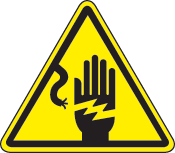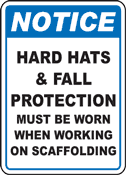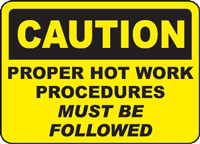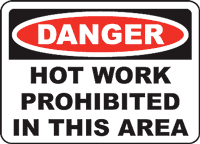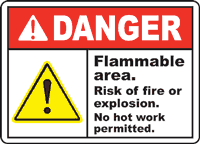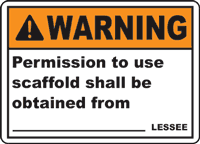Safe Work Permits
Introduction
Certain safeguards that normally protect the worker may have to be removed when repair or maintenance work is performed. When this occurs, the hazards involved need to be identified and a safe work system developed to eliminate or control these hazards A safe work permit is document that identifies the work to be done, the hazard(s) involved, and the precautions to be taken. It ensures that all hazards and precautions have been considered before work begins. Safe work permits should always be used when work is performed by an outside agency or employer.
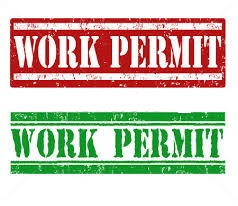

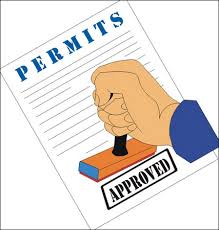
What is a safe work permit?
A safe work permit is a written record that authorizes specific work, at a specific work location, for a specific time period. Permits are used for controlling and co-coordinating work to establish and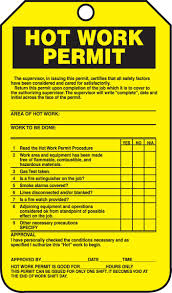 maintain safe working conditions. They ensure that all foreseeable hazards have been considered and that the appropriate precautions are defined and carried out in the correct sequence. The permit is an agreement between the issuer and the receiver that documents the conditions, preparations, precautions, and limitations that need to be clearly understood before work begins. The permit records the steps to be taken to prepare the equipment, building, or area for the work, and the safety precautions, safety equipment, or specific procedures that must be followed to enable the worker(s) to safety complete the work. The safe work permit helps to identify and control hazards, but does not, by itself, make the job safe.
maintain safe working conditions. They ensure that all foreseeable hazards have been considered and that the appropriate precautions are defined and carried out in the correct sequence. The permit is an agreement between the issuer and the receiver that documents the conditions, preparations, precautions, and limitations that need to be clearly understood before work begins. The permit records the steps to be taken to prepare the equipment, building, or area for the work, and the safety precautions, safety equipment, or specific procedures that must be followed to enable the worker(s) to safety complete the work. The safe work permit helps to identify and control hazards, but does not, by itself, make the job safe.
Who benefits from a work permit program?
- Any industry that has a significant risk because of particular hazards.
- Any prime contractor who lets out or sub-contracts work to others to do maintenance or other hazardous work.
- Organizations that have individual employees working in isolated areas and performing non-routine work.
Why use a work permit?
All work exposes the worker to some degree of hazard. This degree of hazard determines the type of safeguards required to protect the worker. Most routine work has defined safe work practices or procedures. In the absence of such procedures, safe work permits should be used. Workers engaged in maintenance work may be at risk if the machinery they are working on is started unexpectedly. Such machinery and equipment needs to be isolated by blanking, blinding, or a power lockout system.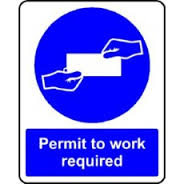
These procedures can be clearly identified by a work permit system. Certain types or conditions of work, such as confined space entry, flammable or explosive situations, exposure to harmful substances or high voltage electrical equipment, and the transfer of hazardous work from one work shift to the next are examples of where safe work practices or the use of work permits is essential. Occupational Health and Safety (OHS) Act and OHS Regulation require employers to provide workers with a safe place of work and to identify known safety hazards. This can be partly achieved through the use of a safe work permit system. Verbal instructions can be misinterpreted or forgotten, whereas a great deal of control is achieved through the use of safe work practices or safe work permits.
Types of safe work permits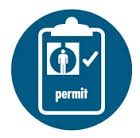
The type of safe work permit required is determined by the nature of the work to be performed and the hazards that must be controlled or eliminated. The range of activities and locations makes it impossible for a single type of permit to be suitable for all situations. The following types are most commonly used and examples are provided at the end of this Safety Bulletin.
Hot Work Permit
Hot work permits are used when heat or sparks are generated by work such as welding, burning, cutting, riveting, grinding, drilling, and where work involves the use of pneumatic hammers and chippers, non-explosion proof electrical equipment (lights, tools, and heaters), and internal combustion engines.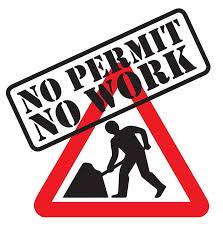
Three types of hazardous situations need to be considered when performing hot work:
(a)the presence of flammable materials in the equipment;
(b)the presence of combustible materials that burn or give off flammable vapors when heated; and
(c)the presence of flammable gas in the atmosphere, or gas entering from an adjacent area, such as sewers that have not been properly protected. (Portable detectors for combustible gases can be placed in the area to warn workers of the entry of these gases).

Hot work-1 Hot work-2 Hot work-3 Hot work-4 Hot work-5
Hot work-6 Hot work-7 Hot work-8 Hot work-9 Hot work-10
Cold Work Permit
Cold work permits are used in hazardous maintenance work that does not involve “hot work”. Cold work permits are issued when there is no reasonable source of ignition, and when all contact with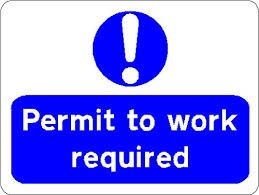 harmful substances has been eliminated or appropriate precautions taken.
harmful substances has been eliminated or appropriate precautions taken.
Cold work permit-1 Cold work permit-2 Cold work permit-3
Cold work permit-4 Cold work permit-5 Cold work permit-6
Confined Space Entry Permit
Confined space entry permits are used when entering any confined space such as a tank, tower, pit or sewer. The permit should be used in conjunction with a “Code of Practice” which describes all important safety aspects of the operation.
To know more about confined space (Click here & save)
CSP-Sample-1 CSP-Sample-2 CSP-Sample-3 CSP-Sample-4
CSP-Sample-5 CSP-Sample-6 CSP-Sample-7 CSP-Sample-8
Height work permit
WAH Sample-1 WAH Sample-2 WAH Sample-3 WAH Sample-4
WAH Sample-5 WAH Sample-6 WAH Sample-7 WAH Sample-8
E lectrical work permit
lectrical work permit
Elec.permit-1 Elec.permit-2 Elec.permit-3 Elec.permit-4
Elec.permit-5 Elec.permit-6 Elec.permit-7 Elec.permit-8
Excavation work permit

Excavation permit-1 Excavation permit-2 Excavation permit-3
Excavation permit-4 Excavation permit-5 Excavation permit-6
Excavation permit-7 Excavation permit-8 Excavation permit-9
Scaffolding work permit 
Scaffolding permit - 1 Scaffolding permit - 2
Scaffolding permit - 3 Scaffolding permit - 4
Radiography work permit 
Radiography permit-1 Radiography permit-2
Radiography permit-3 Radiography permit-4
Click the below link to download the safety guidelines for all topics

Safety Guideline - confined space
Safety Guideline - Working at height
Safety Guideline - electrical work place risk
Safety Guideline - excavation work permit
Safety Guide line scaffolding work


